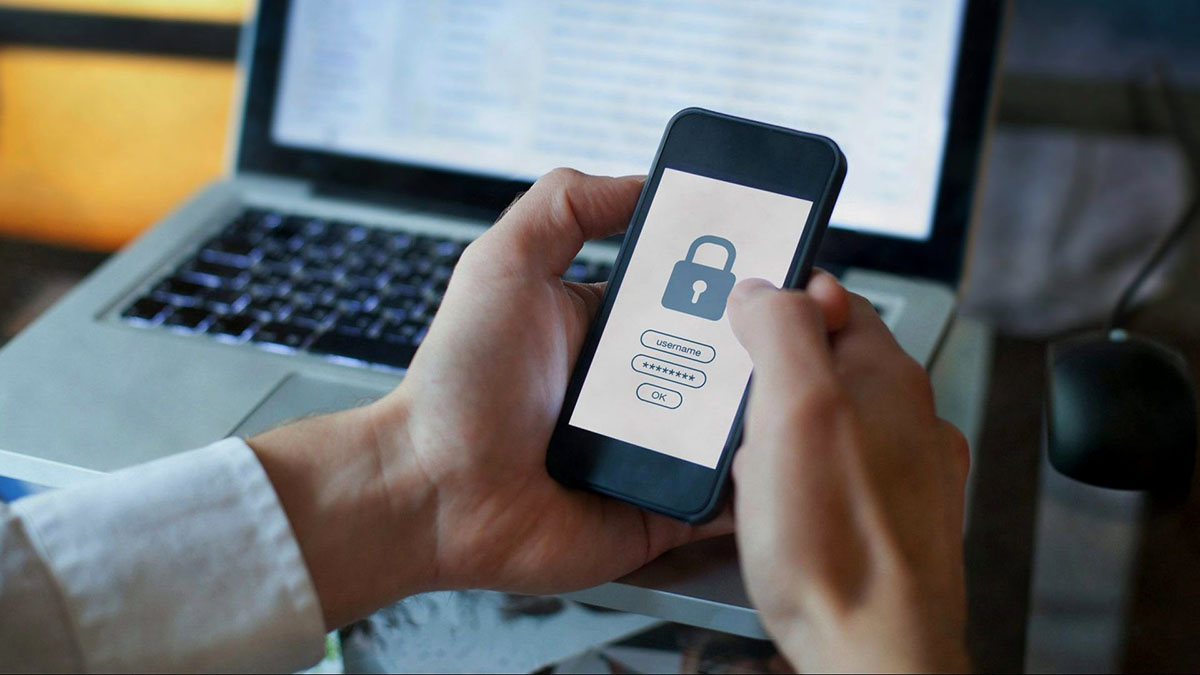

Finance
How To Lock Your Savings Account
Modified: December 30, 2023
Learn how to effectively lock your savings account and protect your finances with our expert finance tips. Secure your savings and achieve financial peace of mind today!
(Many of the links in this article redirect to a specific reviewed product. Your purchase of these products through affiliate links helps to generate commission for LiveWell, at no extra cost. Learn more)
Table of Contents
- Introduction
- Step 1: Determine the Type of Savings Account
- Step 2: Contact Your Bank or Financial Institution
- Step 3: Verify Your Identity
- Step 4: Request to Lock Your Savings Account
- Step 5: Confirm the Locking Process
- Step 6: Review and Understand the Terms and Conditions
- Step 7: Set Up Alerts and Notifications
- Step 8: Monitor Your Locked Savings Account Regularly
- Step 9: Unlocking Your Savings Account
- Conclusion
Introduction
Locking your savings account can provide an added layer of security and peace of mind. Whether you have a substantial amount of money in your savings account or simply want to safeguard your funds, taking steps to lock your savings account can help protect your hard-earned savings from unauthorized access and potential fraud.
In this article, we will guide you through the process of locking your savings account. We will cover the key steps involved, the necessary precautions, and provide you with practical tips to ensure a smooth and secure locking process.
Locking your savings account can be particularly beneficial if you anticipate not needing access to your funds for an extended period. It can also be a wise decision if you are concerned about the possibility of someone gaining unauthorized access to your account.
By locking your savings account, you have the ability to restrict any withdrawals, transfers, or changes to the account without your explicit permission. This effectively adds an extra layer of security, making it more difficult for anyone to make unauthorized changes or access your funds.
It is worth noting that locking your savings account is different from simply setting up a strong password or using two-factor authentication for online banking. While those measures certainly contribute to account security, locking your savings account is a specific action taken to disable any transactions or changes on your account.
By taking the time to lock your savings account, you can have greater confidence that your hard-earned funds are secure and protected. So, let’s dive into the step-by-step process of how to lock your savings account and ensure its safety.
Step 1: Determine the Type of Savings Account
The first step in locking your savings account is to determine the type of account you have. Different financial institutions may offer various types of savings accounts, each with their own set of terms and conditions.
Start by reviewing the documentation or statements provided by your bank or financial institution. Look for any specific information regarding account locking procedures or restrictions. It is essential to understand the specific terms and requirements associated with your savings account to ensure a smooth locking process.
While most basic savings accounts should have the ability to be locked, certain specialized accounts, such as certificates of deposit (CDs) or high-yield savings accounts, may have particular rules or limitations when it comes to locking.
If you are unsure about the specific details of your account or have any questions, it is advisable to contact your bank directly. Their customer service representatives can provide you with the necessary guidance and clarification regarding your account’s locking capabilities.
It is important to note that locking your savings account does not mean closing it or suspending your regular deposits. Locking simply restricts access and transactions on the account while allowing you to continue saving and accumulating interest.
Once you have a clear understanding of the type of savings account you have, its requirements, and capabilities, you can proceed to the next step of contacting your bank or financial institution.
Step 2: Contact Your Bank or Financial Institution
After determining the type of savings account you have, the next step is to contact your bank or financial institution to initiate the process of locking your account. This can typically be done through their customer service hotline or by visiting a branch in person.
Before reaching out, it may be helpful to gather your account information to provide to the representative. This can include your account number, personal identification details, and any other relevant information that may be required to verify your identity and access your account.
When contacting your bank, be prepared to explain your intention to lock your savings account and inquire about the specific procedures involved. The representative will guide you through the necessary steps and provide any additional documentation or information that may be required.
It is essential to ensure that you are speaking with a legitimate representative from your bank or financial institution. Be cautious of unsolicited calls or emails and always double-check the contact information provided on the official website or statements.
During the communication, take the opportunity to inquire about any fees or restrictions associated with locking your savings account. While locking your account itself may not incur any additional charges, some financial institutions may have specific policies or limitations that could affect your decision.
Additionally, it is important to inquire about the timeframe for locking your account. Some banks may be able to process the request immediately, while others may require a waiting period or additional paperwork. Understanding the timeline will help you plan accordingly and ensure that your savings account is locked as quickly as possible.
By contacting your bank or financial institution, you demonstrate your commitment to securing your funds and initiate the process of locking your savings account. This step sets the stage for the subsequent actions required to finalize the locking process and protect your savings.
Step 3: Verify Your Identity
Once you have contacted your bank or financial institution to start the process of locking your savings account, the next step is to verify your identity. This step is crucial to ensure that only authorized individuals can make changes or access your account.
During the verification process, you may be required to provide personal identification documentation or answer security questions. This is done to establish your identity and confirm that you are the account holder or an authorized representative.
The specific requirements for verifying your identity may vary depending on your bank or financial institution. Typically, they will ask for your full name, account number, address, and perhaps other identifying information such as your date of birth or social security number.
It is important to have the necessary documentation and information readily available to expedite the verification process. This may include your ID card, driver’s license, passport, or any other identification documents that your bank may request.
Depending on the bank’s policies and security protocols, identity verification can be done over the phone, through online forms, or at a physical branch location. Follow the instructions given by the bank representative or on their website to complete the verification process seamlessly.
Remember to remain cautious and avoid sharing your personal identification information with anyone other than authorized representatives from your bank or financial institution. Scammers may attempt to pose as bank employees to gain access to your account, so always verify the authenticity of the communication before sharing any personal information.
By verifying your identity, you are taking an important step in ensuring that only authorized individuals can make changes or access your locked savings account. This adds an extra layer of security and protects your funds from unauthorized access or fraudulent activity.
Step 4: Request to Lock Your Savings Account
After verifying your identity, you can now request the actual locking of your savings account. This step involves explicitly stating your intention to lock the account and initiating the necessary procedures with your bank or financial institution.
During this step, the bank representative will guide you through the specific process and documentation required to lock your savings account. They may request additional information or ask you to provide specific forms or signatures.
When submitting your request to lock your savings account, make sure to clearly communicate the duration for which you want the account to be locked. This could range from a specific period, such as a few months or years, or until further notice.
It’s essential to carefully consider the duration for which you want to lock your account. While longer lock-in periods provide enhanced security, they also restrict your access to the funds during that time. Therefore, align the locking duration with your financial goals and anticipated need for the money.
Some banks may have specific forms or procedures for locking your account, which you might need to fill out and sign. It is important to read and understand these documents thoroughly before signing to ensure you are aware of any terms, limitations, or potential penalties associated with locking your savings account.
Additionally, this step may also involve determining if any interest will continue to be earned on the locked savings account. Some financial institutions may offer reduced interest rates or limit the availability of certain promotions or bonuses during the lock-in period. Clarify these details with your bank representative to have a clear understanding of the impact on your savings.
By formally requesting to lock your savings account and completing any necessary documentation, you are actively taking steps to ensure the security of your funds and protect them from unauthorized access.
Step 5: Confirm the Locking Process
Once you have requested to lock your savings account, it is crucial to confirm that the locking process has been successfully initiated. This step ensures that the necessary actions have been taken to secure your account and restrict any unauthorized access or transactions.
Following your request, the bank or financial institution will provide you with a confirmation that your savings account has been locked. This confirmation can be in the form of an email, letter, or notification through your online banking portal.
Review the confirmation carefully to ensure that all the details are accurate. Take note of the effective date of the lock and the duration for which the account will remain locked. If you notice any discrepancies or have concerns, contact your bank immediately to address them and seek clarification.
It is essential to keep a record of the confirmation for future reference. This documentation will serve as proof that you have initiated the process of locking your savings account, providing an added layer of protection in case of any discrepancies or disputes later on.
Additionally, take the time to familiarize yourself with any instructions or guidelines provided in the confirmation regarding accessing your account during the lock-in period. Some banks may require additional verification or specific procedures if you need to make an exception and access your funds before the lock period is over.
To ensure the effectiveness of the locking process, it is a good practice to periodically review your account activity and transaction history. This allows you to identify any unauthorized or suspicious activities promptly, even though the account is locked.
By confirming the locking process, you are reassured that your savings account is now secure and protected. This step provides you with the peace of mind knowing that your hard-earned funds are safeguarded from unauthorized access or fraudulent transactions.
Step 6: Review and Understand the Terms and Conditions
After confirming the initiation of the locking process for your savings account, it is essential to thoroughly review and understand the terms and conditions associated with the lock-in period. This step ensures that you are aware of any limitations, restrictions, or penalties that may apply during the locked duration.
Take the time to carefully read the terms and conditions provided by your bank or financial institution. These terms may include details such as the duration of the lock-in period, any penalties for early withdrawal, and any additional restrictions on account activity.
Pay close attention to any fees or charges that may be associated with unlocking your account before the predetermined lock-in period expires. Understanding the potential financial implications can help you make an informed decision when it comes to accessing your funds before the designated time.
Additionally, familiarize yourself with any exceptions that may exist for accessing your savings account during the locked period. Some banks may have specific procedures or criteria that need to be met in order to make withdrawals or modify the account settings during the lock-in period.
If you have any questions or concerns about the terms and conditions, it is advisable to reach out to your bank or financial institution for clarification. It is important to have a clear understanding of the restrictions and requirements to ensure that you can effectively manage your savings account during the locked duration.
By reviewing and understanding the terms and conditions, you are equipped with the necessary knowledge to navigate the locked period of your savings account. This step allows you to make informed decisions regarding your finances and helps you avoid any potential penalties or misunderstandings.
Step 7: Set Up Alerts and Notifications
As you proceed with locking your savings account, it is important to set up alerts and notifications to stay informed about any activity or changes related to your account. This step allows you to actively monitor and track your account while it is locked, providing an additional layer of security.
Most banks and financial institutions offer various notification options, such as email alerts, text messages, or in-app notifications, that can be customized to suit your preferences. These notifications can provide real-time updates on transactions, balance changes, or any attempts to access your locked savings account.
First, determine which types of alerts and notifications are most relevant to you. Common options include balance notifications, transaction notifications, and security alerts. Choose the options that align with your needs and help you stay well-informed about the status of your locked savings account.
Next, visit your online banking portal or contact your bank’s customer service to set up the desired alerts and notifications. They will guide you through the process of selecting your preferences and ensuring that the notifications are activated for your account.
It is also important to evaluate the frequency and urgency of the alerts. Setting up immediate notifications for certain types of activities, such as large withdrawals or unauthorized login attempts, can provide an early warning system and allow you to address any issues promptly.
Regularly monitoring the alerts and notifications can give you peace of mind, as it allows you to quickly identify any suspicious activity and take appropriate action. If you notice any unusual or unauthorized transactions, immediately contact your bank to report the issue and initiate the necessary steps to secure your account.
By setting up alerts and notifications, you stay in control of your locked savings account and have a proactive means of monitoring any activity or potential security breaches. This step helps you feel more secure about the status of your funds and enhances the overall security of your financial accounts.
Step 8: Monitor Your Locked Savings Account Regularly
Even though your savings account is locked, it is essential to monitor it regularly to ensure that it remains secure and to stay aware of its status. Regular monitoring allows you to detect any unusual activity or potential issues promptly, providing you with peace of mind and ensuring the safety of your funds.
Check your locked savings account periodically through your online banking portal or mobile app. Review the account balance, transaction history, and any notifications or alerts that you have set up. Verify that there are no unauthorized transactions or changes to your account settings.
If you notice any suspicious activity or discrepancies, it is crucial to contact your bank immediately. Report the issue and provide any necessary information to assist in their investigation. Promptly addressing any concerns helps mitigate potential risks and minimizes any potential losses.
Additionally, it is important to keep your contact information up to date with your bank. This ensures that you will receive any important notifications or communications regarding your locked savings account.
Monitoring your locked savings account regularly is also an opportunity to track your progress towards your financial goals. You can review your savings balance, assess your savings strategy, and make any necessary adjustments to stay on track.
Remember, even though your savings account is locked, it is still important to practice good security measures. Be cautious of phishing attempts, protect your personal information, and regularly update your passwords to enhance account security.
By regularly monitoring your locked savings account, you are actively taking charge of your financial security. It allows you to stay vigilant, detect any potential issues, and take the necessary steps to resolve them promptly.
Step 9: Unlocking Your Savings Account
At some point, you may need to access the funds in your locked savings account. Whether it’s because your lock-in period has ended or you have an unexpected financial need, unlocking your savings account requires following a specific process outlined by your bank or financial institution.
The first step in unlocking your savings account is to review the terms and conditions specified by your bank regarding the lock-in period. Familiarize yourself with any penalties or restrictions that may apply to early withdrawals or unlocking the account before the designated time.
If you are nearing the end of the lock-in period, your bank may automatically unlock your savings account. In such cases, your funds will be accessible once again without any additional steps needed from your end. However, it’s still a good idea to confirm the account’s unlocking status.
If you wish to unlock your savings account before the designated time, contact your bank or financial institution to initiate the unlocking process. They will provide you with the necessary instructions and any required documentation to proceed.
Depending on the bank’s procedures, unlocking your savings account may require you to fill out specific forms, provide identification documentation, or visit a branch in person. Follow the guidelines provided by your bank representative to ensure a smooth and efficient unlocking process.
Be aware that unlocking your savings account may come with certain conditions or fees. Ensure that you fully understand any associated costs or potential impacts on your account balance before proceeding with the unlock request.
Once your request to unlock your savings account is received and processed by the bank, they will provide confirmation that your account has been unlocked. Take note of the effective date of the unlock and any changes to the terms and conditions associated with your account.
After your account is unlocked, you can freely access your funds and resume normal account activity. Remember to review your account statements and activity to ensure accuracy and monitor for any unauthorized transactions.
Unlocking your savings account allows you to regain access to your funds and use them according to your financial needs. By following the specific procedures outlined by your bank, you can unlock your account efficiently and effectively.
Conclusion
Locking your savings account is a proactive step towards protecting your hard-earned money and enhancing your financial security. By following the step-by-step process outlined in this article, you can ensure that your savings account remains safe from unauthorized access and potential fraud.
By determining the type of savings account you have and contacting your bank or financial institution, you initiate the process of locking your account. Verifying your identity adds an extra layer of security, ensuring that only authorized individuals can make changes or access your account.
Requesting to lock your savings account and confirming the locking process provide the assurance that the necessary steps have been taken to secure your funds. Reviewing and understanding the terms and conditions associated with the lock-in period helps you navigate the locked period with transparency and clarity.
Setting up alerts and notifications allows you to stay informed about any account activity, while regular monitoring ensures the ongoing security and accuracy of your locked savings account. Finally, when the time comes to unlock your account, following the specific procedures outlined by your bank enables you to regain access to your funds.
Remember, locking your savings account not only provides security but also encourages disciplined saving habits by limiting access to your funds. It is essential to balance your financial goals and needs when deciding on the duration of the lock-in period.
By actively taking steps to lock and monitor your savings account, you have greater control over your financial well-being and protect your savings from potential threats. Stay vigilant, communicate with your bank, and regularly review your account to ensure that your hard-earned funds are safe and secure.
Lock your savings account today and enjoy the peace of mind that comes with knowing your financial future is protected.














